How to Craft a Winning Content Marketing Strategy for Business Growth
Table of Contents
- Introduction
- Understanding the Importance of a Content Marketing Strategy
- Setting Clear Marketing Goals for Business Growth
- Identifying and Understanding Your Target Audience
- Creating High-Quality, Engaging Content
- Effective Distribution and Measurement of Your Content
- Freelancers Offering Freelancing Services UK
Introduction
In today’s highly competitive digital landscape, having a robust content marketing strategy is crucial for driving business growth. A well-crafted content marketing strategy not only helps in building brand awareness but also engages your target audience, fosters customer loyalty, and ultimately boosts your bottom line. Whether you’re a small business owner or a marketing professional, understanding how to create and implement an effective content marketing plan can set you apart from the competition. This ultimate guide will walk you through the essential steps to develop a winning content marketing strategy tailored to your business needs, ensuring sustainable growth and long-term success. From setting clear marketing goals to creating high-quality content and effectively distributing it, we cover everything you need to know to elevate your content marketing efforts.
Understanding the Importance of a Content Marketing Strategy
In the digital age, content marketing has emerged as one of the most effective ways to attract and engage potential customers. However, to harness its full potential, it’s crucial to have a well-defined content marketing strategy. Here’s why it’s essential for business growth:
- Establishes Brand Authority and Trust
- A strategic approach to content marketing positions your business as an authority in your industry. By consistently producing valuable, relevant content, you build trust with your audience. This trust is foundational, as customers are more likely to engage with and purchase from brands they perceive as knowledgeable and reliable.
- Improves Search Engine Rankings
- Quality content that’s optimized for search engines can significantly improve your website’s visibility. By using relevant keywords and creating content that addresses the needs and queries of your audience, you can rank higher on search engine results pages (SERPs). Higher rankings drive organic traffic, which is crucial for sustained business growth.
- Enhances Customer Engagement and Retention
- Engaging content keeps your audience coming back. It fosters interaction and encourages users to spend more time on your site. Furthermore, by providing content that solves problems and adds value, you enhance customer satisfaction, which is key to retention and loyalty.
- Generates Quality Leads
- A well-executed content marketing strategy attracts leads who are genuinely interested in your products or services. By targeting specific audience segments and addressing their unique needs through personalized content, you can generate high-quality leads that are more likely to convert into paying customers.
- Supports Other Marketing Strategies
- Content marketing is versatile and can amplify other marketing efforts. Whether it’s social media marketing, email campaigns, or pay-per-click advertising, quality content serves as the backbone, providing valuable material that can be shared across various channels to maximize reach and impact.
Understanding these core benefits underscores the importance of investing time and resources into developing a comprehensive content marketing strategy. It’s not just about creating content; it’s about creating the right content that aligns with your business goals and resonates with your target audience.
Setting Clear Marketing Goals for Business Growth

The foundation of any successful content marketing strategy is a set of well-defined marketing goals. These goals not only provide direction but also help in measuring the effectiveness of your efforts. Here’s how to set clear marketing goals that align with your business growth objectives:
- Define Your Business Objectives
- Start by understanding your overall business objectives. Are you looking to increase brand awareness, drive more traffic to your website, generate leads, or boost sales? Clearly outlining these objectives will help you create a content marketing strategy that directly supports your business goals.
- Set SMART Goals
- Effective marketing goals are Specific, Measurable, Achievable, Relevant, and Time-bound (SMART). For example, instead of setting a vague goal like “increase website traffic,” specify “increase website traffic by 20% in the next six months.” This clarity will guide your strategy and make it easier to track progress.
- Identify Key Performance Indicators (KPIs)
- KPIs are metrics that help you measure the success of your content marketing efforts. Depending on your goals, KPIs could include website traffic, conversion rates, social media engagement, email open rates, or lead generation. Select KPIs that are directly linked to your objectives and can provide actionable insights.
- Conduct a Competitive Analysis
- Analyzing your competitors’ content marketing strategies can provide valuable insights and inspiration. Identify what works well for them and areas where they may be lacking. This information can help you set realistic goals and differentiate your content.
- Create a Content Calendar
- A content calendar is a vital tool for planning and organizing your content marketing activities. It ensures consistency and helps you align your content with key business events, product launches, and seasonal trends. A well-structured content calendar supports goal achievement by keeping your team focused and accountable.
- Monitor and Adjust
- Setting goals is not a one-time activity. Regularly monitor your progress against the established KPIs and be prepared to adjust your strategy as needed. Use analytics tools to track performance and gather data-driven insights that can inform your future content marketing efforts.
By setting clear, actionable marketing goals, you create a roadmap for your content marketing strategy that drives business growth. These goals ensure that every piece of content you create serves a purpose and moves you closer to achieving your overall business objectives.
Identifying and Understanding Your Target Audience
A successful content marketing strategy hinges on a deep understanding of your target audience. Knowing who they are, what they need, and how they behave enables you to create content that resonates and drives engagement. Here’s how to identify and understand your target audience:
- Conduct Market Research
- Start by conducting thorough market research to gather insights about your potential customers. Use surveys, focus groups, and interviews to collect data on their demographics, preferences, and pain points. This research will help you build a comprehensive picture of your target audience.
- Create Buyer Personas
- Buyer personas are detailed profiles that represent your ideal customers. They include information such as age, gender, occupation, income level, interests, challenges, and purchasing behavior. Creating these personas helps you tailor your content to address the specific needs and desires of different segments of your audience.
- Analyze Customer Data
- Leverage existing customer data to gain insights into your audience’s behaviour. Use analytics tools to track website visits, social media interactions, email engagement, and purchase history. This data reveals patterns and trends that can inform your content strategy and ensure it aligns with audience preferences.
- Monitor Social Media and Online Communities
- Social media platforms and online communities are valuable resources for understanding your audience. Monitor discussions, comments, and feedback related to your industry, products, or services. Pay attention to the topics that generate the most interest and engagement, as these can guide your content creation efforts.
- Segment Your Audience
- Not all members of your audience are the same. Segment your audience based on shared characteristics or behaviours. For example, you might have different segments for new customers, repeat buyers, or those interested in specific product categories. Tailoring content for each segment enhances relevance and effectiveness.
- Engage with Your Audience
- Direct engagement with your audience provides first-hand insights. Encourage feedback through comments, surveys, and social media interactions. Responding to questions and comments not only builds relationships but also offers valuable information about what your audience values and expects from your content.
- Refine Over Time
- Understanding your audience is an ongoing process. Regularly update your buyer personas and audience segments based on new data and changing market conditions. Continuously refine your content strategy to stay aligned with evolving audience needs and preferences.
By identifying and deeply understanding your target audience, you ensure that your content marketing efforts are focused and effective. This targeted approach increases the likelihood of engaging your audience, building loyalty, and driving business growth.
Creating High-Quality, Engaging Content
Creating high-quality, engaging content is the cornerstone of a successful content marketing strategy. This content not only attracts and retains your audience but also encourages them to take action, driving business growth. Here’s how to ensure your content stands out:
- Focus on Value and Relevance
- Your content should always provide value to your audience. Focus on solving their problems, answering their questions, and addressing their needs. The more relevant and useful your content is, the more likely your audience will engage with it and share it with others.
- Leverage Different Content Formats
- Different types of content can cater to various audience preferences and consumption habits. Consider incorporating blog posts, videos, infographics, podcasts, eBooks, and case studies into your content strategy. A diverse content mix keeps your audience engaged and allows you to reach them through their preferred channels.
- Craft Compelling Headlines
- The headline is the first thing your audience sees, and it plays a critical role in capturing their attention. Craft compelling, curiosity-inducing headlines that accurately reflect the content’s value. Use power words, numbers, and questions to make your headlines more enticing.
- Optimize for SEO
- Search engine optimization (SEO) is essential for increasing the visibility of your content. Conduct keyword research to identify terms your audience is searching for, and incorporate these keywords naturally into your content. Optimize meta descriptions, headers, and images to improve your search engine rankings and drive organic traffic.
- Incorporate Storytelling
- Storytelling is a powerful tool for making your content more relatable and memorable. Share real-life examples, case studies, and personal anecdotes that illustrate your points. Engaging narratives can evoke emotions and create a deeper connection with your audience.
- Use High-Quality Visuals
- Visual elements like images, videos, and infographics can significantly enhance the appeal of your content. High-quality visuals not only make your content more attractive but also help in conveying complex information more effectively. Ensure that all visuals are relevant, professional, and optimized for fast loading times.
- Encourage Interaction
- Interactive content can boost engagement and make your audience feel more involved. Incorporate elements like quizzes, polls, surveys, and interactive infographics that encourage users to participate actively. This interaction can provide valuable insights and enhance the overall user experience.
- Maintain Consistency
- Consistency in your content creation and publishing schedule is key to building a loyal audience. Develop a content calendar to plan and organize your content efforts. Consistent posting not only keeps your audience engaged but also signals reliability and commitment.
- Measure and Analyze Performance
- Regularly analyze the performance of your content to understand what works and what doesn’t. Use analytics tools to track metrics like page views, time on page, social shares, and conversion rates. This data helps you refine your content strategy and focus on creating content that drives results.
By focusing on creating high-quality, engaging content, you can attract and retain a loyal audience, enhance your brand’s credibility, and drive sustainable business growth. Quality content is the foundation of a successful content marketing strategy, ensuring that your efforts resonate with your audience and achieve your marketing goals.
Effective Distribution and Measurement of Your Content
Once you’ve created high-quality content, the next step is to ensure it reaches your target audience effectively. Additionally, measuring the performance of your content allows you to refine your strategy and optimize future efforts. Here’s how to distribute and measure your content effectively:
- Choose the Right Channels
- Determine which channels are most relevant to your audience and align with your content goals. This could include your website, social media platforms, email newsletters, industry publications, or third-party websites. Tailor your content distribution strategy to each channel to maximize reach and engagement.
- Optimize for Each Platform
- Each distribution channel has its own unique characteristics and audience preferences. Optimize your content for each platform by formatting it appropriately and adapting it to fit the platform’s tone and style. For example, shorter, visually appealing content may perform better on social media, while longer, more in-depth content may be suitable for your website or blog.
- Schedule Regular Content Promotion
- Develop a consistent schedule for promoting your content across various channels. Use social media scheduling tools to schedule posts in advance and ensure a steady flow of content. Experiment with different posting times and frequencies to determine the optimal schedule for maximum visibility and engagement.
- Engage with Your Audience
- Don’t just push out content; actively engage with your audience to foster relationships and encourage interaction. Respond to comments, answer questions, and participate in relevant discussions on social media and other platforms. Engaging with your audience builds trust and loyalty, making them more likely to share your content with others.
- Repurpose and Refresh Content
- Maximize the value of your content by repurposing it across different formats and channels. For example, turn a blog post into a podcast episode, create a video based on a popular article, or compile a series of related posts into an eBook. Repurposing content allows you to reach new audiences and extend the lifespan of your content assets.
- Monitor Performance Metrics
- Track key performance metrics to gauge the effectiveness of your content distribution efforts. Metrics to consider include website traffic, social media engagement, email open rates, click-through rates, conversion rates, and ROI. Use analytics tools to gather data and identify trends, successes, and areas for improvement.
- A/B Test Different Strategies
- Experiment with different distribution strategies and tactics to see what resonates best with your audience. Conduct A/B tests to compare variations in content format, messaging, timing, and distribution channels. Analyze the results to identify which approaches yield the highest engagement and conversion rates.
- Iterate and Optimize
- Use the insights gained from monitoring performance metrics and A/B testing to refine your content distribution strategy over time. Continuously iterate and optimize your approach based on what works best for your audience and aligns with your business objectives. Flexibility and adaptability are key to staying ahead in the ever-evolving landscape of content marketing.
By effectively distributing and measuring your content, you can ensure that your efforts are reaching the right audience, driving engagement, and ultimately contributing to your business growth objectives.
Conclusion:
Crafting a winning content marketing strategy is a journey that requires dedication, creativity, and strategic planning. Throughout this guide, we’ve explored the essential steps to develop a robust content marketing plan that drives business growth. From understanding the importance of a content marketing strategy to effectively distributing and measuring your content, each element plays a crucial role in your overall success.
As you embark on implementing your content marketing strategy, keep in mind the following key takeaways:
- Strategy is Key: A well-defined content marketing strategy serves as the foundation for all your content efforts. Take the time to set clear goals, understand your audience, and create valuable, engaging content that aligns with your objectives.
- Quality Over Quantity: Focus on creating high-quality content that provides value to your audience. Quality content not only attracts attention but also builds trust and credibility, driving long-term results.
- Consistency is Crucial: Consistent publishing and promotion of your content are essential for maintaining audience engagement and loyalty. Develop a content calendar and stick to it to ensure a steady flow of content.
- Measure and Adapt: Regularly monitor the performance of your content and use data-driven insights to refine your strategy. Be open to experimentation and adapt your approach based on what resonates best with your audience.
- Stay Relevant and Flexible: The digital landscape is constantly evolving, so it’s essential to stay informed about industry trends and changes in consumer behaviour. Be prepared to adjust your strategy to stay ahead of the curve and remain relevant to your audience.
By following these principles and continuously refining your content marketing strategy, you can position your business for sustainable growth and success in the competitive digital marketplace. Remember, content marketing is not just about creating content; it’s about building meaningful connections with your audience and driving real business results.
Are you ready to take your content marketing efforts to the next level? Implement the strategies outlined in this guide and watch as your business grows and thrives in the digital world.
Need help with this? We have freelancers and virtual assistants available to help you implement your business marketing strategy
Freelancers Offering Freelancing Services UK
UAE Assignment Help
I will write your compelling SEO blog posts and articles
3 Articles Of 500+ Words SEO Optimized, Well Researched and Quality Article For £10
Expert social media manager
100 ChatGPT Prompts TO BOOST Digital Marketing
Convert PDF files to Excel, Word and PowerPoint
Valuable And Actionable Business Insights For Your Business
Custom Excel Spreadsheet With Formulas Or Macro
Email Marketing And Sales Funnel That Converts
Unleash LinkedIn's Lead Generation Power!
Backlinks from UK based websites
I will provide result driven monthly SEO services
Rank Your Website First Page On Google
Manually Create Powerful UK Local Citations
For more freelancing services visit our homepage








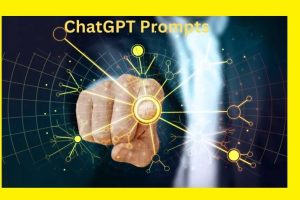
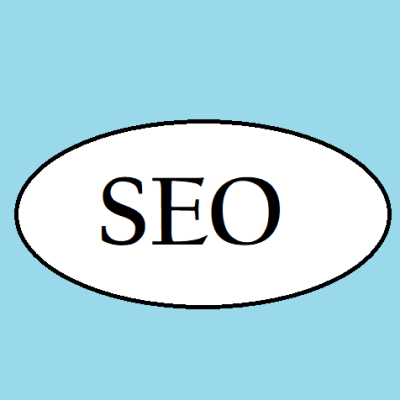



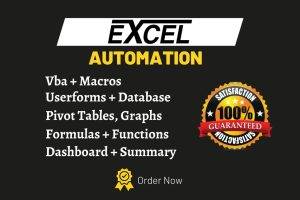






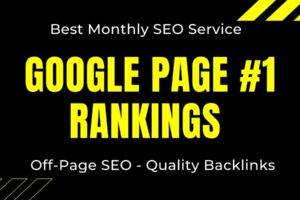

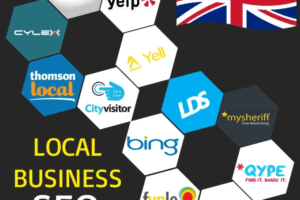

Comments